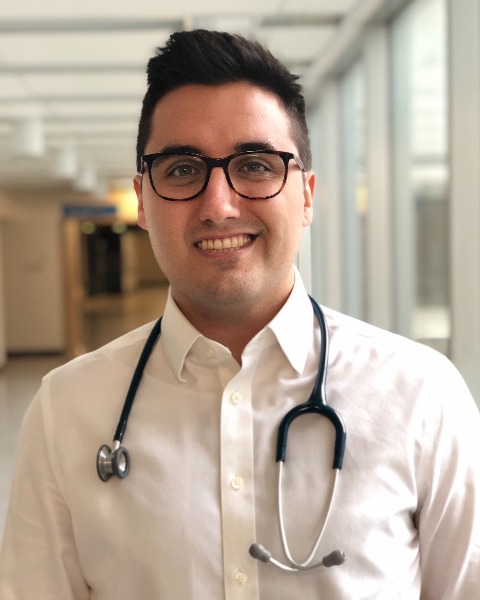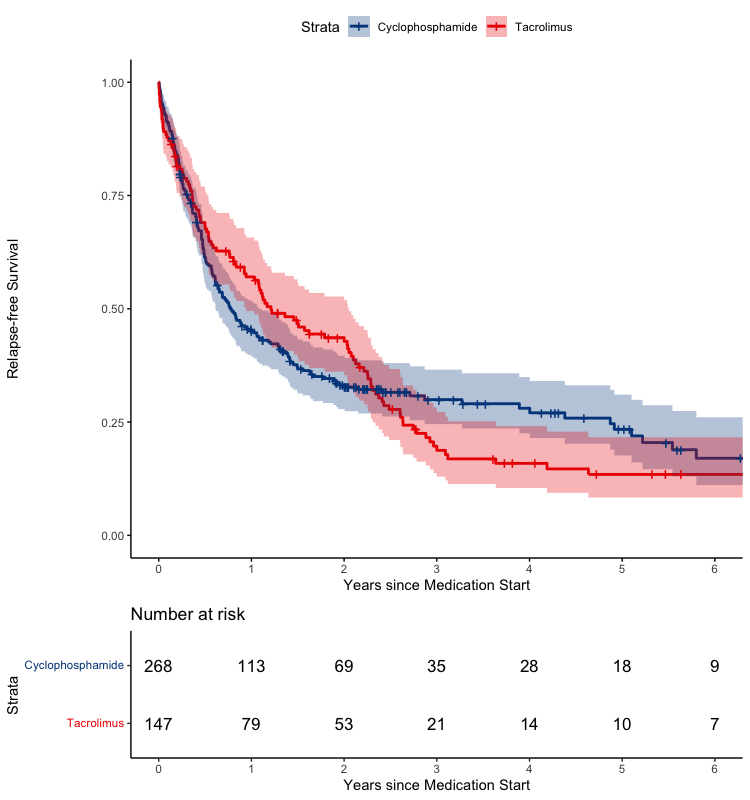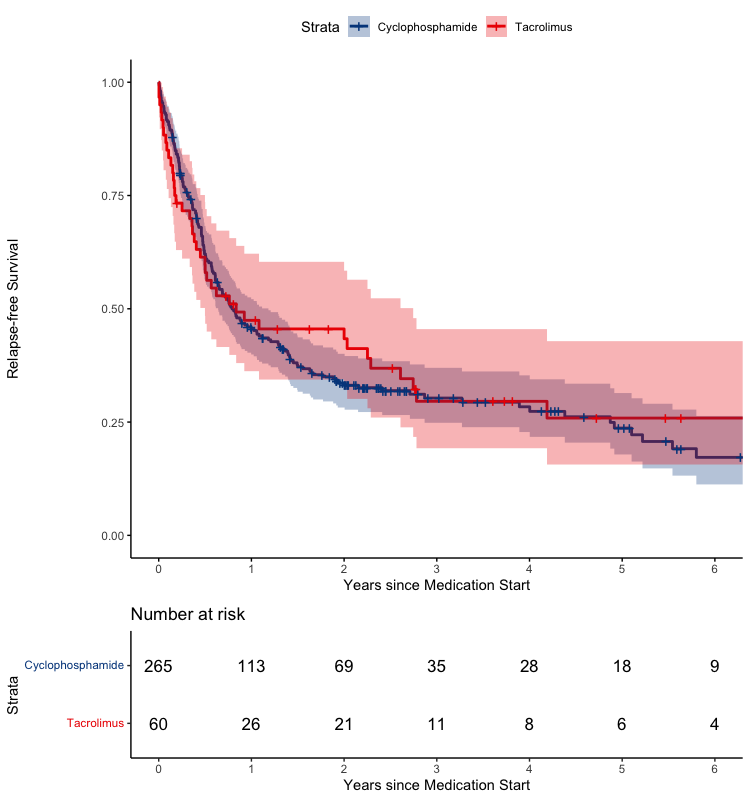Nephrology
Session: Nephrology 4
27 - Prolonged remission after cyclophosphamide and tacrolimus treatment in childhood nephrotic syndrome: a prospective cohort study
Sunday, May 5, 2024
3:30 PM - 6:00 PM ET
Poster Number: 27
Publication Number: 27.1838
Publication Number: 27.1838

Cal H. Robinson, MD
Pediatric Nephrology Fellow
The Hospital for Sick Children
Toronto, Ontario, Canada
Presenting Author(s)
Background: Steroid-sparing immunosuppressive medications are used in up to half of children with idiopathic nephrotic syndrome, to prevent disease relapses and steroid-related toxicity. Cyclophosphamide and tacrolimus are two of the most commonly-used medications. However, their comparative effectiveness and predictors of response to each medication are poorly understood.
Objective: Our objectives were to compare the frequency and predictors of prolonged remission after initiation of each medication.
Design/Methods: We performed a retrospective analysis of data from children (1-18 years) enrolled in Insight into Nephrotic Syndrome: Investigating Genes, Health, and Therapeutics (INSIGHT). We included nephrotic syndrome cases diagnosed between 1996-2019 from the Greater Toronto Area, Canada that were treated with either cyclophosphamide or tacrolimus. We excluded children with congenital or secondary nephrotic syndrome. The primary outcome was prolonged remission (i.e., no relapse until clinic discharge, transfer to adult care, or loss to follow-up) after medication initiation. We evaluated clinical and histopathological predictors of prolonged remission using multivariable adjusted logistic regression analyses.
Results: Of 613 children with nephrotic syndrome enrolled in INSIGHT, 268 ever received cyclophosphamide and 147 ever received tacrolimus. Over median follow-up of 5.3-years (IQR 2.5-9.1), prolonged remission occurred in 79 (29.5%) post-cyclophosphamide and 33 (22.5%) post-tacrolimus initiation (Figure 1a, p=0.15). There was a significant reduction in the number of relapses by 60.2% and 72.8% from 1-year prior to vs. 1-year post-cyclophosphamide or -tacrolimus initiation, respectively. Among those receiving cyclophosphamide, older age at diagnosis, female sex, later diagnosis year, and lower prior relapse rate were predictive of prolonged remission post-cyclophosphamide. Lower prior relapse rate and focal segmental glomerulosclerosis pathology were predictive of prolonged remission post-tacrolimus initiation.
Conclusion(s): Rates of prolonged remission are similar after cyclophosphamide and tacrolimus treatment. Both medications effectively prevent relapses in the short-term. Certain clinical and histopathological factors predict prolonged remission post-treatment, which can help guide decisions and patient counselling regarding first-line steroid-sparing medication selection.


